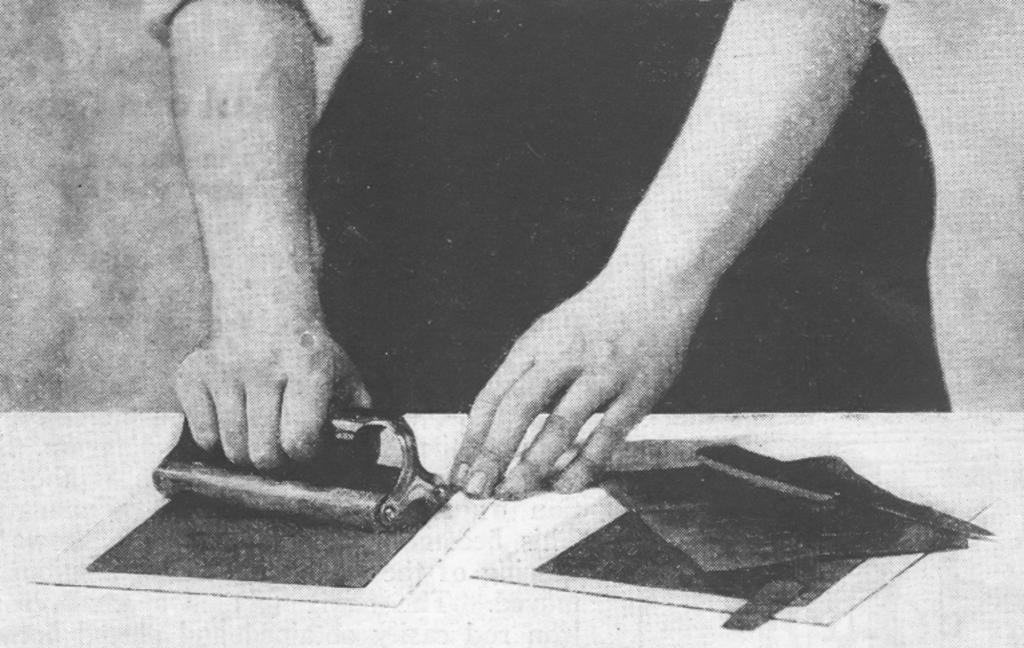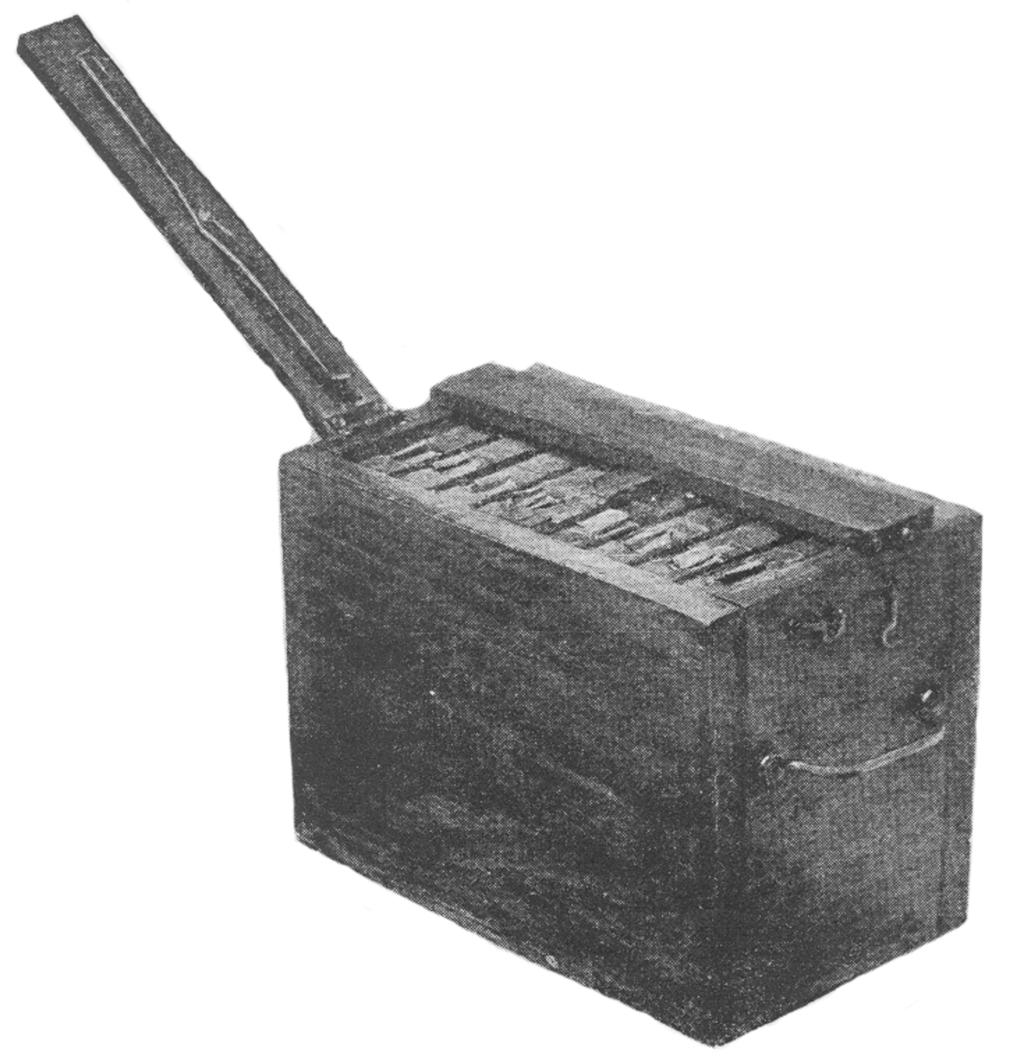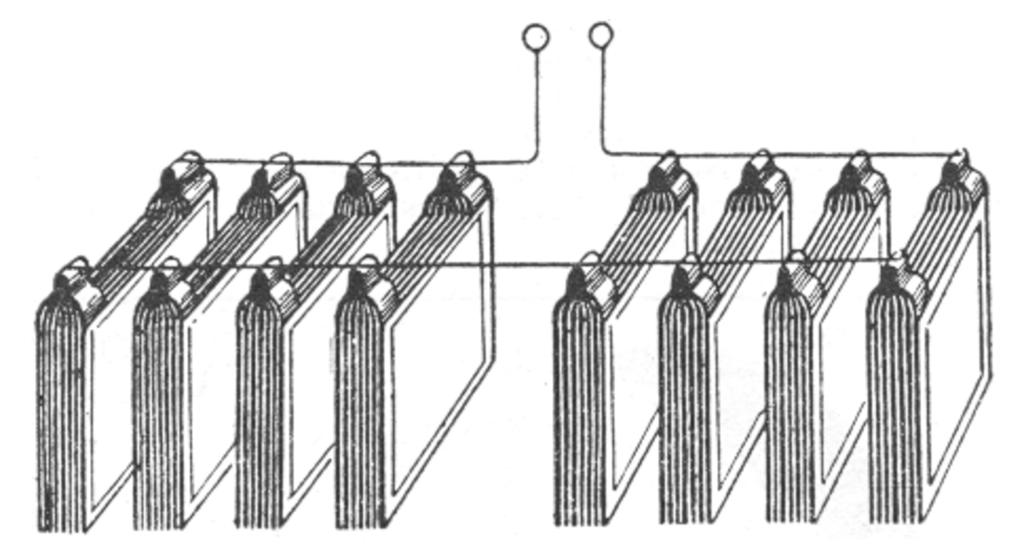TCBA Volume 4 - Issue 1
Page 13 of 18
How to make a High Voltage Condenser
By Paul F. Cheney
(Experimenter April, 1925) (Page 403)
Experimenters who are wont to delve in realms of high frequency and high potential electricity, often experience trouble in securing a condenser of suitable capacity that is neither too expensive nor too liable to be broken down. Mica condensers are undoubtedly the best, but their price is usually above the average home worker's pocketbook. Glass plate condensers come next but unless they are carefully made, and correctly connected, they are most apt to puncture under the great strain. The author knows from past experience, for before the condenser which is to be described was constructed, eight glass plate units had been smashed in rapid-fire succession.
In choosing glass for the plates of a condenser of this type it is necessary to select that which is free from lead and as nearly free from air bubbles and flaws as possible. The author chose photographic plates because of their uniform quality and thickness. By using diplomacy you can get the old plates from your local photographer for almost nothing. The eight by ten inch size is the best for all-around requirements, but the five by seven inch plates will do very well for small condensers. These latter may be had for as little as a cent apiece.
As the emulsion on these plates is conductive, it must be removed. This can most easily be done by allowing them to soak overnight in a strong solution of lye. In the morning they may be rinsed and dried and the work of coating them commenced.
Heavy tinfoil is the cheapest material for coating the plates, and fairly satisfactory, but copper foil in any but the smallest condensers is well worth the difference in price. Two pieces of foil, each six by eight inches, on the opposite sides of an eight by ten photographic plate, give an approximate capacity of .001 microfarad. Foil on the two sides of a five by seven plate gives a capacity slightly less than one-half of this figure. Knowing the capacity of a single plate, units can be built up to any size desired.
The first thing to do in preparing the foil is to squeegee it in contact with a glass plate by the use of an ordinary photo-print roller. Get out all the little wrinkles as far as possible, working from center outward, for the little air spaces between the foil and the glass of the condenser plate are often the scene of minute discharges that are a frequent cause of breakdown. Next cut out as many pieces of foil as will be necessary for the entire condenser.
A good insulating varnish that has been well thinned out is excellent for fastening the foil to the plates. Spread it on with a brush, not too thick, remembering that the adhesive is just a means to an end, and that the greatest desirability is to get the foil as close to the glass as is physically possible. Squeegee the foil well and be sure to get it in the center. On the large plates never leave less than an inch space on each side, for otherwise they will brush heavily and disrupt in short order. Try to get the metal plates exactly opposite each other.
If the condenser is to be of large capacity it is best to group the plates in units of, say, five or ten plates each. This facilitates handling and replacement it a plate becomes broken. The author will outline a method of procedure in this line which has proved very satisfactory.
Cut a number of copper foil strips, each an inch wide and four inches long, to correspond with the number of foil-plates. Lay one of these on the plain glass plate, about an inch from the left upper edge and projecting an inch over the top, and upon this lay one of the coated plates. If the voltage, which is to be used with the condenser, is in excess of five thousand, it is a good plan to smear the space between the edge of the foil and the edge of the glass with vaseline. If this is done to each side of every plate, it will help greatly to prevent brush discharge.
Upon the upper side of the first coated plate, to the right, lay another one of the copper foil terminal strips, corresponding to the first one, but on the opposite side. Next, directly above this, lay the second coated plate. Upon this lay the third copper foil strip, to the left and in alignment with the first. Any number of plates may be added to this, in the same manner, to secure the desired capacity. Five eight by ten plates so arranged give a capacity of .005 mfd., which is a desirable grouping for a unit. A layer of friction tape will bind the plates on the unit tightly together and will help keep the vaseline from oozing out.
When over eight thousand volts are to be used, it is necessary that you connect two banks of condensers in series. However, when we connect two condensers in series, we cut the capacity in half which means that the capacity of each bank must be just twice as great as the capacity desired.
The photograph shows a condenser of .01 mfd. capacity, having two banks of four .005 mfd. units each, connected in series. This condenser has proved its worth after hours of continuous running, connected to a high frequency resonator in conjunction with a one-kilowatt, fifteen thousand-volt transformer.
If the constructor of this condenser is not familiar with photographic plates, he will probably find that they are much thinner than he anticipates, and also that in consequence of this thinness they are very easily broken in manipulating. Therefore, in squeegeeing, it is important that they should be properly supported; if placed upon an irregular wooden top table they will inevitably break. It is well to have a sort of pad underneath it, which again must not be too soft; a folded newspaper will be found quite adequate for the purpose, or a heavy cloth such as a bath towel folded a number of times.
An old recipe for ironing a pocket handkerchief so as to avoid wrinkles was to begin in the middle to apply the iron. In this way by working around in a rough spiral or in a series of radiating strokes all wrinkles were supposed to be pressed out to the edge and to disappear into space, so that the handkerchief came out perfectly flat. By using the fingertips, starting at the center, the tin foil can be put on in the same way, by pressing it down with spiral strokes, working the wrinkles out to the edge.



